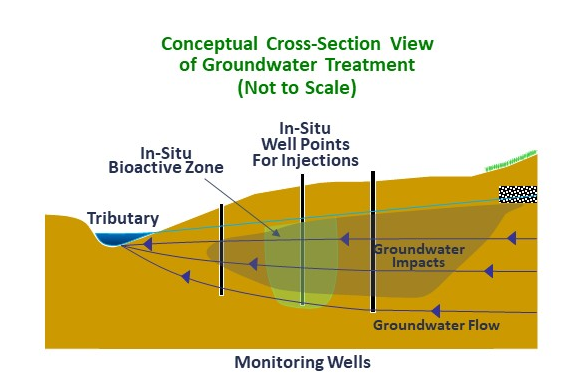 EA utilized a systematic TREE process to identify opportunities for Accelerated Site Closures (Tier 1), Sustainable Operations (Tier 2), and Long-Term Operation/Long-Term Monitoring Optimizations (Tier 3) for all phases of the environmental remediation life cycle at the Hernwood Landfill. Based on the TREE Tier 2 analysis, EA developed, negotiated, and designed a novel, passive groundwater biobarrier and a solar-powered methane extraction system. This innovative remedy was optimized to conform to site hydrogeologic conditions (i.e., fractured bedrock) and potential for impact to an adjacent surface waterbody that would be as protective as a groundwater pump and treat system while being the best tradeoff of remedy effectiveness, sustainability, and costs.
EA utilized a systematic TREE process to identify opportunities for Accelerated Site Closures (Tier 1), Sustainable Operations (Tier 2), and Long-Term Operation/Long-Term Monitoring Optimizations (Tier 3) for all phases of the environmental remediation life cycle at the Hernwood Landfill. Based on the TREE Tier 2 analysis, EA developed, negotiated, and designed a novel, passive groundwater biobarrier and a solar-powered methane extraction system. This innovative remedy was optimized to conform to site hydrogeologic conditions (i.e., fractured bedrock) and potential for impact to an adjacent surface waterbody that would be as protective as a groundwater pump and treat system while being the best tradeoff of remedy effectiveness, sustainability, and costs.
The following advantages/sustainable practices were identified for the first passive groundwater remedy associated with a RCRA-permit closed landfill under the Maryland Department of the Environment Solid Waste Program:
- Simple design and limited construction footprint/disturbance
- No NPDES permit required
- No active treatment system or operator
- No continuous electric/water source required
- No continuous chemicals/cleaning/fouling
- Minimal monitoring and maintenance.
